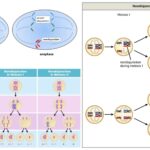O Level Biology 27 Views 1 Answers
Sourav PanLv 9November 4, 2024
Describe the impacts humans have through: (a) over-harvesting of plant and animal species (b) introducing a non-native species to an ecosystem
Describe the impacts humans have through: (a) over-harvesting of plant and animal species (b) introducing a non-native species to an ecosystem
Please login to save the post
Please login to submit an answer.
Sourav PanLv 9May 15, 2025
Human activities significantly impact ecosystems through over-harvesting of plant and animal species and the introduction of non-native species. Both actions lead to profound consequences for biodiversity, ecosystem health, and human well-being.
(a) Over-Harvesting of Plant and Animal Species
Impacts on Ecosystems
- Biodiversity Loss: Over-harvesting, also known as overexploitation, occurs when species are removed from their habitats at a rate faster than they can reproduce. This leads to population declines and can result in extinction at both local and global levels, significantly reducing biodiversity. For example, the unsustainable harvesting of fish stocks has led to the collapse of several fisheries worldwide, disrupting marine ecosystems.
- Disruption of Food Chains: The removal of key species can cause trophic cascades, where the effects ripple through the food web. For instance, overfishing predators like sea otters has allowed prey populations, such as sea urchins, to explode, leading to the destruction of kelp forests that support diverse marine life.
- Habitat Degradation: Over-harvesting can lead to habitat destruction. For example, logging for timber not only removes trees but also alters the structure of the forest ecosystem, affecting countless species that depend on it for survival.
- Economic Consequences: As biodiversity declines due to over-harvesting, the availability of natural resources for human use diminishes, leading to economic instability for communities reliant on these resources for their livelihoods.
(b) Introducing Non-Native Species to an Ecosystem
Impacts on Ecosystems
- Competition with Native Species: Non-native species often outcompete native species for resources such as food and habitat. This competitive advantage can lead to declines or extinctions of native populations. For example, the introduction of the Burmese python in Florida has resulted in significant declines in native mammal populations.
- Alteration of Ecosystem Processes: Non-native species can change ecosystem dynamics by altering nutrient cycling, water availability, and habitat structure. Invasive mangroves can change sediment composition and water flow in coastal areas, impacting local flora and fauna.
- Spread of Diseases: Non-native species can introduce new diseases to which native species have no immunity. This can lead to population declines and further disrupt ecological balance.
- Economic Impact: The economic consequences of introducing non-native species can be severe. They may cause damage to agriculture, fisheries, and infrastructure, leading to costly management efforts. For instance, zebra mussels introduced into the Great Lakes have caused extensive damage to water systems and fisheries
0
0 likes
- Share on Facebook
- Share on Twitter
- Share on LinkedIn
0 found this helpful out of 0 votes
Helpful: 0%
Helpful: 0%
Was this page helpful?




